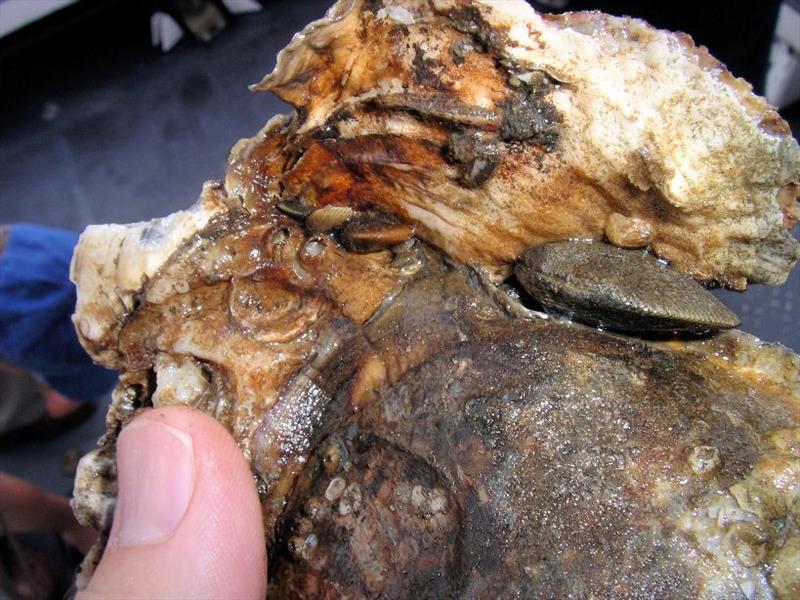
Oyster restoration and water quality provide important benefits to the Chesapeake Bay ecosystem
by NOAA Fisheries 17 Mar 2019 16:31 UTC

oyster clump with hooked mussels © NOAA Fisheries
Oysters and oyster reefs provide important benefits to the Chesapeake Bay ecosystem. Oysters are filter feeders, so they help clean the water as they "eat," improving water quality. And the reefs in which they grow provide habitat for fish, crabs, and a host of other Bay species.
All this can add up to impressive benefits for people, too: Researchers from Morgan State University estimated that mature oyster reefs can contribute to a 160% increase in blue crab harvest and more than $23 million per year in regional output for the Choptank River watershed on Maryland's Eastern Shore. That's because commercially and recreationally important fish are drawn to the reefs for places to live and find food.
Many are familiar with satellite images of land and water. But satellites can share data beyond simple images.
But the Chesapeake's oyster population is at a critically low levelso NOAA and other partners in the Chesapeake Bay Program are working toward a goal to restore oysters to 10 Bay tributaries by 2025.
How can we tell whether the newly constructed or enhanced reefs are having a positive effect on the Bay? Scientists monitor each reef at three and again at six years after restoration; so far, restoration reefs in tributaries of the Choptank River are thriving.
Researchers are also investigating how much nitrogen and phosphorus (excess amounts of which can lead to harmful algae blooms and subsequent low dissolved oxygen levels) oysters can pull from the water. According to a model recently developed by the Virginia Institute of Marine Science, the value of nitrogen and phosphorus nutrient removal services in Harris Creek may be more than $3 million per year.
Restored oyster reefs can improve water qualityincluding water clarityand provide important habitat.
But how much do oysters clear the water? Recently, NOAA scientists noticed a potential correlation between locations where large-scale oyster restoration is under way and places where satellites have noted clearing water. While no cause-and-effect relationship can be attributed to the oyster restoration at this point, scientists are interested in learning more.
Satellites can be used to estimate the amount of sediment (both organic and inorganic) in the water by relating the amount of light reflected by particles, and seen by the satellite, to sediment concentration measurements. This serves as an indication of water clarity. The NASA Aqua satellite, which passes over the Chesapeake Bay once each day during daylight hours, has observed "total suspended matter concentration"TSMsince 2009. NOAA scientists used a program developed by the U.S. Geological Survey to analyze and visualize annual averages of TSM in the Choptank area from 2009 to 2017.
Satellites track water clarity by estimating suspended sediment concentration, based on how particles in the water reflect visible light.
Their analysis indicates that over the 2009-17 time period, the waters in the Harris Creek/Choptank areanear large-scale oyster restoration siteswere becoming more clear as there were fewer particles in the water. Other waters are also becoming clearerbut not as markedly. Using similar methods, the team of satellite and habitat analysts will dive deeper into the data in coming months.